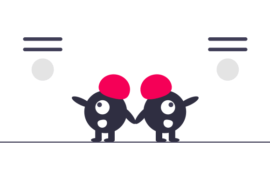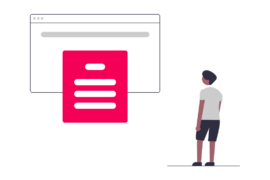Google is introducing new features to improve header bidding support. This can help publishers to manage the header bidding implementation.
For publishers, header bidding is a quantum leap from Google’s monopoly and inefficiencies from other programmatic auctions. It opened up a more controlled platform with required transparency for both sides for ad tech.
We’ve talked at length about the header bidding solutions and its implementation. You can read it to get down to the nitty-gritty of the header bidding technology.
Today we’d like to highlight the new header bidding workflow (header bidding support) that ensures simplified management and improved reporting.
Header Bidding on Google Ad Manager:
Adtech players are taking chances with header bidding but there’s a catch: Despite its widespread adoption and popularity, the technical aspects of header bidding still remain a mystery to many publishers. The technology has matured over the years but it’s still a tedious task to get started.
The existing process for setting up header bidding in Google Ad Manager is time-consuming and resource intensive. There is a lot of code that goes into the set up, and publishers go through a tedious task of managing thousands of ad creatives and line items. No surprise, they complain of its complexity and maintenance issues.
Well, publishers, Google heard your complaints. They’ve developed a new workflow to set up header bidding through yield groups. It’s a potential solution for webmasters who are intimidated by the technical aspects of header bidding performance.
Improved Header Bidding Support: A Simplified Process
The key to this improvement is enhanced communication between Prebid and Google Ad Manager. GAM is building a connection to Prebid to improve header bidding support.
Through this new bridge, publishers will no longer need thousands of line items in their ad server to bring in HB demand. They will be able to manage HB relationships with the same UX as open bidding (yield group).
Google partnered with a few publishers to test their improved support feature for header bidding in GAM. As it turns out, the simplified header bidding workflow can save resources, time, and also drive higher yield.
“Integrating an SSP with Prebid might go from 40 hours to 20 hours of work – but Open Bidding is still 20 minutes.”
Patrick McCann, SVP of research at CafeMedia, one of the publishers in the closed beta.
Through this solution, publishers will be able to make their ad spaces available to header bidders in just a few clicks, and also specify which ad space they want to sell with Open Bidding or Ad Exchange.
In short, the new feature takes all the heavy requests on the browser and moves them to an external server. It still requires the publishers to embed some code on the back-end of their web pages, but most of the legwork will be reduced. Ultimately it’s simpler.
Publishers at Bustle, AccuWeather, and Index Exchange are currently testing out this new feature and seem to be in favor.
“The new workflow has made our process of setting up header bidders significantly simpler, allowing our team to focus on more strategic work.”
Evan Pfeffer, VP Programmatic Solutions, Bustle Digital Group
As Google mentioned in their recent update, their developers were working over the past few months to test this new feature. In a couple of weeks, they’ll open this beta to more publishers and incorporate their feedback into the development process.
“We are excited to see Google making strides towards simplifying the header bidding workflow; it’s an important step for our industry and one that gives publishers the power of choice. We look forward to working with the team to ensure our publisher partners are able to take advantage of this solution, save time and resources and ultimately drive higher yield.”
Mike McNeeley, SVP Product, Index Exchange
Read More:
How to Reduce Unfilled Impressions in Google Ad Manager
How to run a manual experiment in Google Ad Manager
Improved Reporting With Header Bidding Support
Google also made an announcement about the ‘additional reporting features’ which is aimed at giving better insights on header bidding performance. They’re also developing advanced reporting features for publishers who’ll continue to use line items for header bidding.
What’s Next?
The incorporation of GAM and prebid is likely to make ad ops easier. The publishers will be able to manage their header bidding through yield groups. But, on the other side of the fence, some publishers are worried that the bridging of GAM and prebid might affect the existing setups.
While this seems to be a promising tool introduced by Google, we are yet to see whether its performance would be at par or better or less. Google mentions the setup of yield groups (an additional and different setup). Still, the experts in the industry would want to benchmark the performance of the header bidding yield groups before they make a complete move or stick with what they currently have.
AdPushup’s Header Bidding Solution
Merely deploying header bidding in your ad stack isn’t enough. Consistently optimizing it with technical improvements and collaborating with a header bidding partner is the need of the hour. This is what AdPushup’s header bidding solution does. Through our multiple optimisation features using data science and machine learning, we help publishers maximize their yield.
With our header bidding solution, you get:
- Automatic demand partner selection according to optimum requirements
- Smart timeout management
- Freedom to bring your own demand
- Bid monitoring and discrepancy resolution
Read more about our product capability: Header Bidding
In Closing:
Header bidding is an effective tool that gives publishers more power and flexibility to increase revenue and manage demand partners and. As with any emerging technology, header bidding is not fully-featured as of yet. The customisation, implementation, and the need to operate appropriate Price Floors can be quite taxing.
Is the improved header bidding technology really all roses or does it have pitfalls? Only beta tests and time can tell. Ad tech is an ever-evolving space, and with this promising change, it will be interesting to see the actual value it brings against the current set up.
Key Takeaways:
- Google is introducing new features to improve header bidding support, which makes it easier for publishers to manage the implementation.
- The bridging of GAM and prebid might affect the existing setups, but it is likely to make ops easier.
- While the header bidding yield groups seems to be a promising tool introduced by Google, experts would want to benchmark the performance before making any decisions.
- AdPushup’s header bidding solution helps publishers maximize their yield by optimizing the header bidding process with data science and machine learning.
Frequently Asked Questions
Header bidding is a type of programmatic auction in which bid requests are simultaneously sent to multiple demand partners in real-time—which means that every single ad impression has the chance to be purchased at its maximum value, based on available demand.
The most important benefit of header bidding implementation for publishers greater yield. Header bidding allows publishers to have a simultaneous auction from all the bidders; this means publishers can sell inventory per-impression basis and make more money.
A header bidding technology is supported by prebid.js, which is an open-source header bidding wrapper responsible for: making ad calls to demand partners, evaluating bids; and communicating with the ad server.

Shubham is a digital marketer with rich experience working in the advertisement technology industry. He has vast experience in the programmatic industry, driving business strategy and scaling functions including but not limited to growth and marketing, Operations, process optimization, and Sales.







